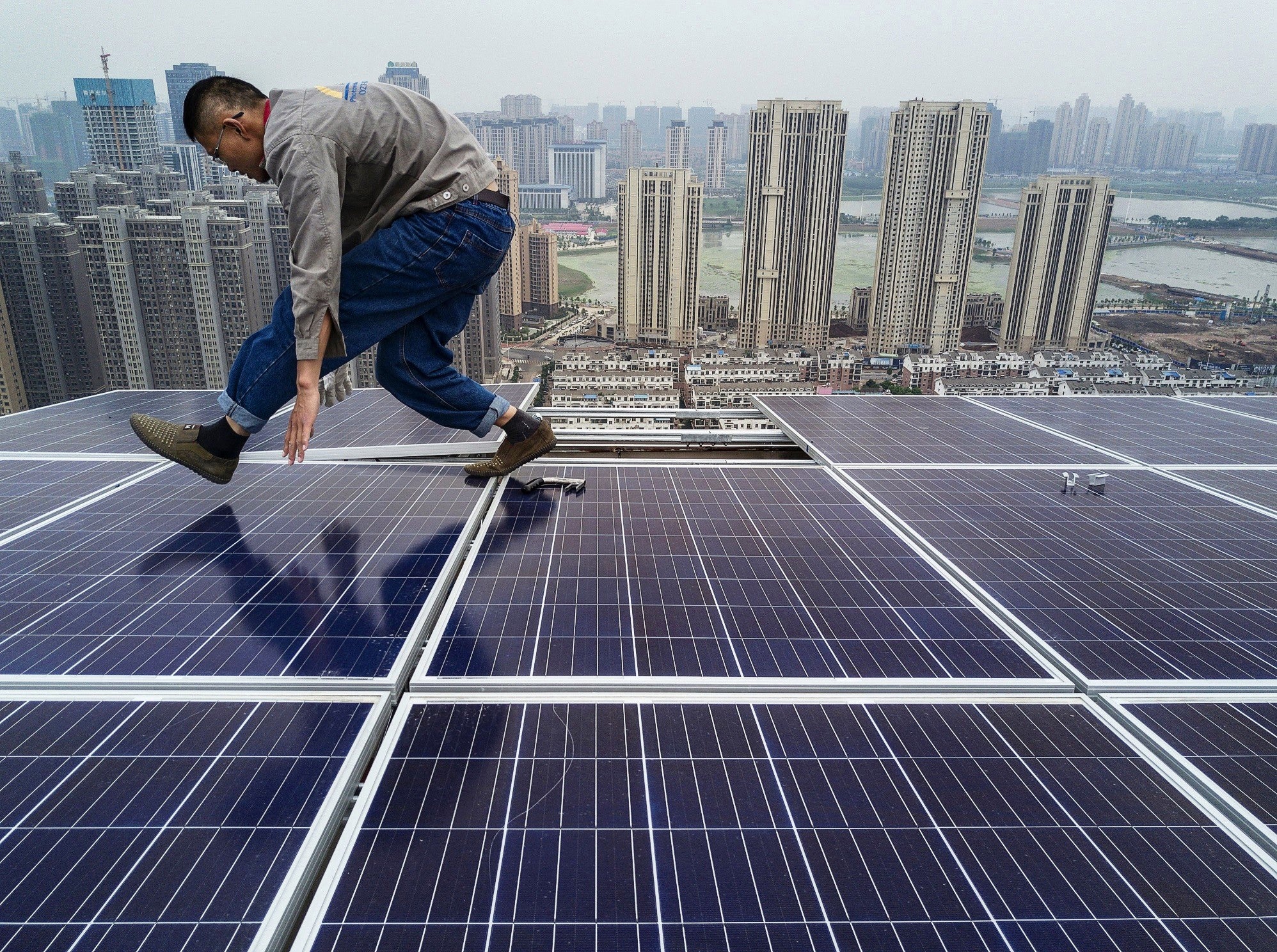Solar panels on rooftops in China could double the world’s capacity
The potential capacity of rooftop solar panels is enough to power all the households in China and South-East Asia

Rooftops and buildings in China fitted with solar panels could match the current global capacity of the entire industry, according to new analysis.
Leading manufacturer Longi Green Energy Technology calculated that there is theoretically enough space on commercial, public and residential buildings to host more than 1,000 gigawatts of solar power capacity.
This would be equivalent to the cumulative capacity of all photovoltaic cells operating around the world in 2022, and enough to power roughly 750 million homes – more than all the households in China and South-East Asia combined.
China has massively ramped up its renewable energy production in recent years, adding 51 gigawatts of solar capacity in 2022. This beat the target set by the country’s Ministry of Housing and Urban-Rural Development of 50 additional gigawatts between 2021 and 2025.
The plan outlined how increased solar capacity could be met through panels placed on factories, residential and office buildings.
The industry still faces key challenges to meet broader climate goals. Energy storage solutions, costs, and grid constraints – particularly in rural areas – are among the hurdles preventing comprehensive adoption of the technology.
Rural solar projects are seen as a key government priority to boost economic development and speed up the transition to renewable energy sources.
“Rural revitalisation is not only about rapid economic development, but also green and low-carbon development to meet villagers’ expectations for a better life,” Zhong Baoshen, chairman of Longi Green Energy Technology, told Bloomberg.
Longi Green Energy Technology was among several Chinese companies to have their products seized by US Customs and Border Protection last year as part of the Uyghur Forced Labor Protection Act (UFLPA), which seeks to prevent imports of products made using forced labour.
At an energy conference on Monday, a White House official reportedly said the gridlock relating to solar panel imports was finally easing.
“There’s clearer guidance out, and we’re seeing more shipments coming through,” John Podesta, a senior adviser to US President Joe Biden, told reporters at the CERAWeek energy conference in Houston.
The development could prove significant for the US meeting its own clean energy targets of cutting all carbon pollution from power plants that run American homes and businesses by 2035.

Join our commenting forum
Join thought-provoking conversations, follow other Independent readers and see their replies
0Comments